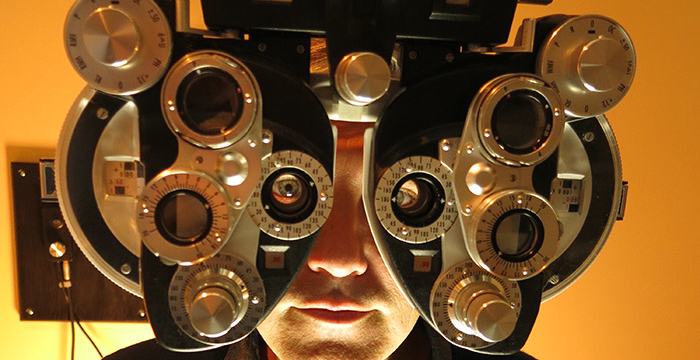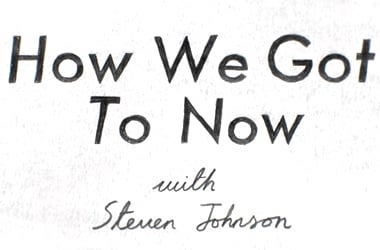

The third episode of How We Got To Now focuses on the history and impact of glass on technology, society, and culture. We asked Steven for some behind-the-scenes stories about the episode.
What was the most surprising idea you discovered in making this episode?
I think it’s the story about Gutenberg–in large part because I thought I already knew the story about Gutenberg’s impact on the world. He invents the printing press; ideas are stored and shared a thousand times more efficiently and that triggers revolutions in science, religion, literature, etc. But there is another story there that is almost never told, which is that Gutenberg’s printing press created the need for reading glasses, which then created a pool of expertise in lens-making all across Europe, which then led to the invention of the telescope and microscope, which revolutionized science and medicine in countless ways. It’s a more indirect causal chain, but a crucial one.
Many of the ideas you discuss were developed a long time before they had their biggest impact. What was the biggest “slow hunch” in this episode?
In the 1960s, Corning developed a new form of glass that was so insanely transparent that if you made a block of it that was the size of a bus and you looked through that block, it would be as clear as looking through a normal window pane of glass. This was amazing, but it wasn’t at all clear why anyone would want a window the size of a bus. But ultimately, once a parallel invention happened in the form of the laser, we realized that we could take tiny fibers of this new glass and send information over it in the form of light. And that became fiber-optics, the core technology that connects today’s internet. On some basic level, the internet is made out of glass.
What was your most incredible moment filming this week’s episode?
Definitely shooting at the top of Mauna Kea at the Keck Telescopes, which actually rely on mirrors to capture their images of space. That environment up there is the most other-worldly environment I’ve ever been–you really feel like you are on Mars, which is appropriate, since it is the best place on the surface of the earth to observe outer space.
Was there a story or idea that you loved that didn’t make it into the final episode?
The trick with this episode is that we spent a lot of time trying to figure out if it was an episode about glass or about vision, and in fact, we did one initial cut of it where it was more vision-focused, which involved the sequence about flash photography and Jacob Riis that we ultimately put in the light episode. So there was quite a bit of structural complexity to this episode. It was much easier writing the chapter on glass in the book because I knew all along that I wanted it to be about the material glass–and in fact, I liked that chapter so much I put it at the very front of the book.
What is the most important idea or innovation about glass emerging right now?
Probably the most interesting, and most obvious, development right now is Glass itself, as in Google Glass. Will the technology of spectacles, which revolutionized so much of our lives back in the centuries after Gutenberg, turn out to have a second act, this time connected to the internet and cameras? It would be fitting in a way, if it did, though I’m not sure if we are quite ready as a society for people walking around with smart glasses. It will be very interesting to see.


How We Get To Next was a magazine that explored the future of science, technology, and culture from 2014 to 2019. Steven Johnson’s How We Got To Now was published by Riverhead Books in 2014, and adapted into a six-part TV show by Nutopia for PBS in 2015. Click the logo to read more about how the show was made.
